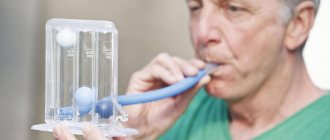Device of mechanical tonometers
A mechanical tonometer consists of: a shoulder cuff, a bulb (air pump), a stethoscope, and a pressure gauge.
Depending on the manufacturer and model, tonometers can have different configurations and accessories: the tonometer can be supplied with a stethoscope built into the cuff, purchased separately or without it at all. Also, for ease of use, some tonometers have a pressure gauge combined with a bulb.
Mechanical tonometer CS Medica CS-107 Mechanical tonometer Little Doctor LD-70 Mechanical shock-resistant tonometer Little Doctor Shock Protection LD-91 Mechanical tonometer Microlife BP AG1-40
Let us consider the device of a mechanical tonometer in more detail:
Cuff
Mechanical blood pressure monitors boast a large range of cuff sizes (cuffs are available for babies, children, teenagers, and adults). Large sizes are suitable for measuring blood pressure not only on the shoulder, but also on the legs.
Pear (supercharger)
It has two valves - a check valve and a dump valve (see photo below). The principle of operation is extremely simple: when you press the bulb, air is pumped into the cuff, while the check valve prevents the air from escaping. A relief valve is provided for smooth air release.
Stethoscope
Designed to listen to heart sounds while measuring blood pressure.
Pressure gauge
Displays the result of blood pressure measurement. When choosing a tonometer, pay attention to the pressure gauge; it is best that it has a large display and a metal case.
Types of mechanical tonometers
Any mechanical tonometer consists of a cuff, a bulb for pumping air, and a pressure gauge. But we can distinguish several types of devices based on their design features.
Mercury
The device includes a compression sleeve, a bulb and a vertical mercury manometer that displays pressure readings. Today, devices of this variety are practically no longer used. However, in terms of measurement accuracy, mercury models remain the best; it is not for nothing that pressure indicators are still designated in mm. rt. Art.
Mercury sphygmomanometer displays readings on a vertical scale
Aneroid
Aneroid are conventional tonometers equipped with mechanical pressure gauges with a digital scale. When measuring pressure, the results must be calculated using the sound method using the characteristic pulsation tones in a phonendoscope. First, note the position of the pressure gauge needle when these tones appear, and then at the moment of their final subsidence. The resulting numbers are the “upper” and “lower” pressure.
With built-in phonendoscope
When using a mechanical tonometer, it is necessary to apply the head of the phonendoscope to the brachial artery, fixing it with the edge of the compression cuff. Without appropriate experience, this is quite difficult to do; the tip of the device may slip out. Therefore, there are devices on sale with a built-in phonendoscope for home use; the device is already fixed in the right place on the compression sleeve.
The built-in phonendoscope allows you to avoid the risk of the listening head slipping
With combined supercharger and pressure gauge
In some mechanical tonometers, the bulb for pumping air is attached directly to the pressure gauge, which displays pressure readings. It is more convenient to use such devices. The user does not need to distribute his attention between several separate elements of the device; the pressure gauge is right in front of his eyes.
If the supercharger and pressure gauge are combined, then it is more convenient to monitor the readings of the device
Classic
In such mechanical tonometers, the individual elements of the device are not fastened together. The user needs to independently secure the head of the phonendoscope at the bend of the arm, press it correctly with the cuff, and then pump up the air and take measurements.
Important! Typically, classic devices are used by doctors, for whom handling a tonometer does not present any difficulties.
In classic tonometers, the bulb, pressure gauge and phonendoscope are separate from each other
Advantages and disadvantages
Advantages of mechanical tonometers:
- Small price.
- High accuracy.
- They fail less often.
- All components are interchangeable.
- Does not depend on power sources.
- Light weight and compact.
Also, mechanical tonometers have one significant drawback - to use a mechanical tonometer, you must have good hearing and a certain skill in measuring blood pressure, otherwise the whole procedure of measuring your own pressure will not make any sense. However, this problem can be solved if you ask a knowledgeable person to measure your blood pressure, and at the same time he will show you how to do it correctly.
How to choose a good mechanical blood pressure monitor
There are a few things to consider when purchasing a medical device. The ease of use of the device will depend on them.
Availability of a phonendoscope
Pressure is determined using a mechanical tonometer using the so-called Korotkoff sounds. Therefore, a phonendoscope is a strictly necessary element of the device. Without it, you simply cannot use the device; it is better if the device is included in the kit and does not require a separate purchase.
Cuff sizes
When choosing a mechanical tonometer, it is important to consider the size of the cuff. For most users, a standard 22-38 cm compression sleeve is suitable; larger people should look for larger models with a circumference of 48-56 cm.
Availability of certificates
For home use, you must purchase only certified devices from pharmacies or official medical stores. You should not purchase too cheap devices from little-known brands, their readings may be erroneous.
Additional functions
To facilitate the use of a tonometer, modern devices have additional functions. Their number depends on the model of the device. The choice of a specific device is determined by personal wishes and financial capabilities.
So, these functions of tonometers include the following:
- PAD technology – with its help it is possible to identify arrhythmia;
- MAM technology – helps to determine the average of three measurements taken in a row;
- memorizing results;
- measurement quality control;
- watch;
- energy saving mode;
- calendar;
- voice and sound alerts;
- display prompts - in this case, the backlight of the screen signals whether the pressure is within the normal range.
A bag is often included as well. It allows you to store the device and facilitates its transportation.
Which brand of mechanical tonometer is better?
When purchasing a mechanical blood pressure monitor, you should pay attention to several brands. Among them:
- Microlife;
- Little Doctor;
- AND (A&D);
- C. S. Medica;
- Well.
The best manufacturers of mechanical tonometers have been specializing in the development and creation of medical devices for decades. Measuring devices are highly accurate and reliable; they are purchased not only for home use, but also for medical institutions.
Information about measurement methods
Information about measurement techniques (methods) is given in the operating instructions.
Regulatory documents establishing requirements for mechanical medical tonometers "Armed"
1 GOST R 50444-92 (Section 3, 4) “Medical devices, apparatus and equipment. General technical conditions".
2 GOST R 51959.1-2002 “Non-invasive sphygmomanometers (blood pressure meters). Part 1. General requirements."
3 GOST R 51959.2-2002 “Non-invasive sphygmomanometers (blood pressure meters). Part 2. Additional requirements for mechanical sphygmomanometers."
Rating of the best mechanical tonometers in terms of accuracy for home use in 2021
Mechanical devices are considered the most accurate of all. But within the category, we can highlight models that have earned especially good reviews.
Microlife BP AG1-30
The mechanical tonometer is equipped with a combined pressure gauge and bulb; a universal cuff is suitable for both thin and fat arms. It is equipped with a built-in phonendoscope, so it does not cause difficulties when used at home.
You can buy Microlife BP AG1-30 for 1800 rubles
Little Doctor LD-100
The device from the rating of the best mechanical tonometers for home consists of a 25-36 cm cuff, a phonendoscope and a supercharger with a pressure gauge. It has a large contrast dial, the bulb is equipped with a check valve mesh filter, it prevents clogging of the device. The device allows you to determine pressure using the Korotkoff sound method, as well as listen to breathing sounds.
The average cost of LD-100 is 1300 rubles
Little Doctor LD-71
The mechanical device is suitable for measuring blood pressure in children and adults. The cuff is adjustable from 25 to 36 cm, and a phonendoscope is supplied with the tonometer. The markings on the pressure gauge are large and contrasting; the bulb and hoses are made of durable rubber that does not dry out over time.
LD-71 - inexpensive mechanical pressure gauge for 1600 rubles
Purpose of the device
Normal blood pressure in a healthy person is 120/80 mmHg. Art. Some people are characterized by lower or higher parameters, which is also a variant of the norm. However, a strong deviation from the indicated values indicates the development of dangerous diseases. To identify these disorders, it is worth using a special device - a tonometer.
This device should definitely be in the home medicine cabinet for people who suffer from hypertension. To prevent the development of a hypertensive crisis, such people should constantly monitor their blood pressure. Based on its results, the doctor selects adequate treatment.
The need to use a blood pressure monitor is not always associated with hypertension. After 50 years of age, blood pressure often increases due to poor general health. In such a situation, it is also necessary to measure blood pressure in order to provide timely assistance to the person.
Athletes often need a device to monitor their level of physical activity (modern devices allow you to measure not only blood pressure, but also pulse). In addition, the need for a tonometer is experienced by people who often face stressful situations or constant psycho-emotional stress.
People who have diabetes and hypotension should monitor their blood pressure parameters. It is also necessary to monitor such indicators during the period of bearing a child.
Important: If a person often experiences headaches, nausea, dizziness, or pain in the heart, this indicates a deviation of blood pressure readings from the norm, which is fraught with dangerous consequences.
The use of a tonometer allows you to identify disturbances in the functioning of the body. A timely call for an ambulance can save a person’s life.
Rating of mechanical tonometers for measuring blood pressure with a built-in phonendoscope
Not everyone can correctly install the phonendoscope head under the cuff and fix it. Therefore, models in which a device for listening to heart sounds is already attached to the compression sleeve are very convenient to use.
A&D UA-100
One of the best mechanical tonometers with a built-in stethoscope has a very sensitive membrane. The cuff is adjustable to a length of 22-32 cm, the bulb is equipped with a protective valve that prevents dust from entering the blower. The pressure gauge dial has large and clearly visible numbers.
Mechanical tonometer for home A&D UA-100 costs only 790 rubles
CS Medica CS 105
An inexpensive mechanical pressure gauge has a standard cuff, the length is adjustable from 20 to 38 cm. It is equipped with a special valve that allows you to integrate a phonendoscope into the compression sleeve. A durable metal bracket is also provided for securely fixing the cuff on the forearm.
Attention! The sealing insert in the compression sleeve prevents it from warping and makes the tonometer easier to handle.
The average cost of CS-105 from CS Medica is 650 rubles
Meditech MT-20
The mechanical device with a built-in stethoscope comes in a durable metal case. It is equipped with a pressure gauge with a large display and large numbers, and it is possible to open and calibrate the device yourself if necessary. The phonendoscope is very sensitive, isolated from external noise.
,
You can buy a mechanical tonometer MT-20 for 720 rubles
Features of the cuffs
One of the important elements of the tonometer is the cuff. It is a fabric shell with a rubber chamber inside. There are fastening Velcro on the top of the cuff. This element is worn on the shoulder or wrist.
The cuff has different sizes - it all depends on the person’s hand. To ensure the measurements are as accurate as possible, it is important to choose the right size. In this case, the length of the pneumatic chamber should be as close as possible to the circumference of the patient’s arm.
The size is determined by 2 numbers:
- for children, the coverage is 15-22 cm (small, S);
- medium cuffs have a size of 22-32 cm (medium, M);
- large – 32-42 cm (large, L).
Important: You should choose the cuff that best matches the specified values and arm circumference. To determine the girth of the shoulder, you need to focus on the middle zone between the fossa of the elbow and the level of the collarbone.
Wrist devices usually have small cuff sizes, so they are not always suitable for overweight people.
Top 10 best mechanical professional tonometers for doctors
Professional blood pressure monitors differ little from household ones. But they usually demonstrate higher accuracy. Another difference between medical models may be an enlarged cuff. A doctor who sees patients in a clinic or makes house calls must have a device suitable for use on thin and overweight arms.
A&D UA-200
A professional tonometer has a sensitive phonendoscope and gives a very low error. It is equipped with a standard cuff measuring 22-32 mm, a supercharger made of high-quality rubber and a case for storing the device. Often used by doctors in hospitals, ambulances and clinics.
The cost of the professional mechanical tonometer A&D UA-200 is quite high - 10,000 rubles
Riester Sanaphon
The mechanical device is recommended for home use and use in medical institutions. Guarantees high accuracy of measurements, including for cardiovascular diseases. The device comes in a lightweight metal case, equipped with a latex bulb and a sensitive stethoscope. The supercharger is equipped with microfilters; they prevent dust and fine dirt from entering the measuring system.
You can purchase a professional blood pressure monitor from Riester Sanaphon for 6,700 rubles
CS Medica CS-109 Pro
This professional-type mechanical tonometer is designed specifically for doctors. It is equipped with 3 cuffs without a bracket and a bag for storing and carrying the device; the pressure gauge in this model is combined with a bulb. A high-quality phonendoscope with a sensitive membrane allows you to accurately determine blood pressure using sound tones.
You can buy a professional CS Medica tonometer for 4,400 rubles
Adjutor Luxe IAD-01-2B
The high-precision mechanical tonometer is equipped with a cuff made of wear-resistant nylon. Recommended for use in medical institutions, it is reliable and has a long service life. The diameter of the compression sleeve is 22-36 cm, a metal pressure gauge is connected to the air blower.
The average price of the Adjutor Luxe tonometer is 1200 rubles
CS Medica CS-110 Premium
This premium mechanical tonometer is designed for use in medical practice and at home. It has an impact-resistant chrome-plated body and comes with an enlarged cuff of 22-39 cm. The pressure gauge in the device is combined with a bulb.
The CS-110 tonometer from CS Medica costs about 3,900 rubles
Microlife BP AG1-20
An inexpensive professional model with a compression sleeve of standard sizes comes in a set with a stethoscope and a latex seamless bulb. The device is distinguished by high accuracy, smooth control, and the air is released from the supercharger very gently. The device lasts a long time, so it is popular with doctors who measure the blood pressure of patients on a daily basis.
You can buy a professional tonometer AG1-20 from Microlife for 1000 rubles
Microlife BP AG1-10
Another professional tonometer is equipped with a wide sleeve of 25-40 cm with a tight fit on the arm. The blower of the device is latex, durable, and the set includes a bag for transportation. The device demonstrates high accuracy and is recommended for use by doctors. However, a stethoscope is not included in the kit; you will have to buy it separately.
The average price of AG1-10 from Microlife is only 760 rubles
B.Well WM-62S
The budget-friendly mechanical device with an extended compression sleeve comes with a metal stethoscope and a latex blower. The needle valve in the bulb ensures smooth deflation of air without any pain. The device is durable, highly accurate and suitable for people of any size.
B. Well WM-62S is inexpensive - about 820 rubles
B.Well WM-61
A professional device with a wide cuff without a metal ring is recommended for use by doctors. Equipped with an accurate pressure gauge and a wear-resistant cuff with shoulder fastening. The supercharger is made of durable latex and has no seams, so even with constant use, the tonometer lasts a long time and does not fail.
The advantages of B.Well WM-61 include low cost - 650 rubles
B.Well PRO-60
This reliable professional-grade blood pressure monitor comes complete with a stethoscope and a universal cuff. It is distinguished by high sensitivity and accuracy, is reliable in use and lasts a long time. Equipped with an enlarged compression sleeve - 22-42 cm, so it is suitable for people with large builds. The blower of the device has a smooth descent, due to which the measurement error is minimal, and the patient does not experience any unpleasant sensations during the process.
You can buy B.Well PRO-60 for only 700 rubles
Popular manufacturers
Today there are many companies that produce such devices. The most popular brands include the following:
- Microlife (Microlife);
- Omron (Omron);
- AND;
- Nissei;
- Beurer.
Each of the listed brands has its own advantages. When choosing, people are guided by their financial capabilities and the required functions of the device. If in doubt, it is better to consult a doctor.
A tonometer is a device that allows you to monitor blood pressure readings. Today there are many devices that differ in the principle of operation and the presence of additional functions. Thanks to this, each person can choose the appropriate device depending on their needs.
Did you like the article? Save it!
Still have questions? Ask them in the comments! Cardiologist Mariam Harutyunyan will answer them.
Ivan Grekhov
Graduated from the Ural State Medical University with a degree in General Medicine. General practitioner
Which tonometer is better - electronic or mechanical?
When choosing a home blood pressure monitor, users must first decide on the type of device. In addition to mechanical devices, automatic models are available in pharmacies and medical stores, and at first glance they seem more convenient.
Electronic tonometers have important advantages. Namely:
- ease of use - to measure pressure, just put on the cuff and press the button on the body;
- automatic calculation of results - the tonometer displays both blood pressure and pulse, while the user does not need to listen to his own heart through a phonendoscope;
- useful additional functions - the devices are able to take into account arrhythmia and assess whether the pressure is within the normal range according to the WHO scale.
Electronic tonometers operate in automatic mode, but depend on batteries and are less accurate.
However, electronic devices are slightly less accurate than mechanical ones; when using, you must always take into account the error. Medical devices operate on batteries or mains power, and cannot be used completely autonomously.
As for mechanical tonometers, they remain the most accurate of all existing ones. You don’t need to buy batteries for them; you can measure pressure even in places where there is no electricity at all. However, using the devices is quite difficult; you not only have to pump air into the cuff, but also count the sound tones as the air is deflated, while simultaneously looking at the pressure gauge scale. This requires some experience and good concentration.
Which tonometer to choose depends on the personal needs of the user. If it is important to get the most accurate results, it is better to learn how to use a mechanical device. For simple pressure monitoring, an automatic device will be sufficient.
Advice! In any case, it is better for older people to purchase automatic tonometers for independent measurements. In old age, it becomes especially difficult to correctly count sound tones and determine the result.
Read in this article:
- Design and principle of operation of a mechanical tonometer
- Automatic blood pressure monitor device
- How does an automatic blood pressure monitor measure blood pressure?
- Features of wrist tonometers and semi-automatic devices
- How to choose the right tonometer?
- Convenient and accurate instruments for measuring pressure
Blood pressure is an important indicator of the functioning of the circulatory system, the heart and the entire body as a whole. To measure this parameter, instruments called tonometers are used. They differ in the principle of operation and functionality, in design and method of use. To choose the right device for home use, it is worth understanding how the tonometer works and how it is designed.
Criterias of choice
To purchase a good mechanical device, you need to know that the devices have differences in configuration. In addition, it is important to take into account the characteristics of your body in order to eliminate the possibility of an incorrect final result.
So, what should you pay attention to?
- cuff size. If a person is overweight, there are devices with an enlarged cuff;
- stethoscope. Not all devices are included. If so, you should buy it separately, since measurement without this part is impossible;
- hearing or vision impairment. In this case, independent use is impossible, since the dial of the pressure gauge is small, and the tones must be listened to carefully;
- the quality of the materials from which the components are made. The bulb should be elastic, the cuff should be well stitched and fit tightly on the shoulder, the pressure gauge should be made of high-quality metal;
- built-in pressure gauge or phonendoscope. This is convenient and reduces measurement time.
Accuracy, cost-effectiveness and durability are the main advantages of mechanical devices for measuring blood pressure. Also, repairs in case of breakdown will cost very little.
Advantages
Reliable construction, simple design, accurate transmission of pressure in the cuff to the scale - thanks to these factors, even modern specialists use mercury tonometers. This measurement method provides more accurate results even with severe arrhythmia. Despite this fact, these devices are being eliminated from healthcare settings today due to the minimization of mercury used in healthcare. In addition, the complexity of repairs plays a role due to the frequent lack of necessary spare parts. After a breakdown, a mercury pressure meter is easier to dispose of. Most likely, in the near future, a mercury tonometer (USSR and other countries) will only be seen in photographs...
Important! Disposal of the device should only be carried out by specialists!







